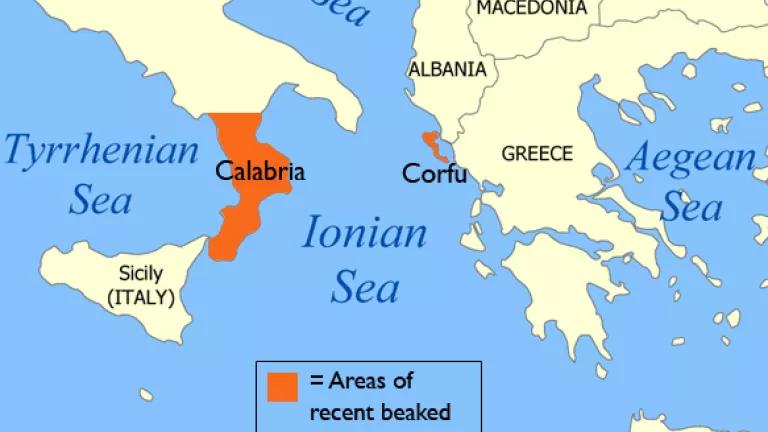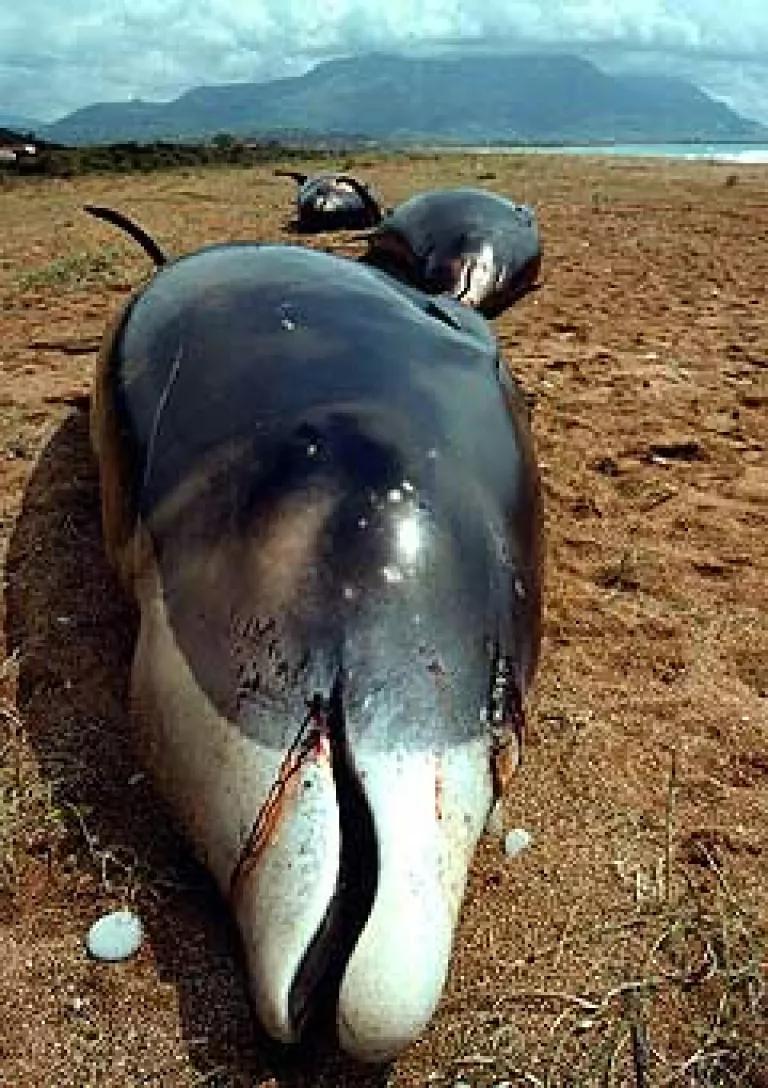
Last week, beaked whales began stranding along the Greek island of Corfu, on the eastern edge of the Ionian Sea. The whales stranded alive, and rescuers struggled to lead them back to deeper water. Around the same time, a mother and calf stranded on the coast of Calabria, about 130 miles away on the other side of the water. The mother perished.
Back on Corfu, witnesses at two separate stranding sites reported hearing a strange whistling sound every ten or fifteen seconds – a truly remarkable thing since they were above the waterline and the signal probably came from below.
Sound familiar? For us, the species and the pattern of strandings immediately recalled the terrible mass strandings of whales caused by naval sonar.
From November 27 through Dec. 2, the Italian Navy has been conducting a major exercise known as “Mare Aperto” (“Open Seas”) in the central-southern Tyrrhenian, Ionian, and southern Adriatic. At least one of the participating ships in this year’s exercise, an Italian Maestrale-class frigate called the Scirocco, is equipped with active sonar made by Raytheon and identical to systems used by the U.S. Navy.
Of course, the Italian exercise covered a wide area, and we don’t yet know how closely it may be correlated in space and time with the mass strandings. All possible causes, including other anthropogenic noise sources, should be investigated. But the facts look ominous.

Sonar has killed Cuvier’s beaked whales in the Ionian Sea before, and researchers suspect it has played a role in several other strandings involving the same population. One biologist wrote that, thanks to these events, the population “may be steadily headed towards its extinction.”
We have called on the Italian government – which tries to mitigate against the impacts of sonar training – to furnish information on the nature, timing, and location of activities associated with Mare Aperto. Pathologists were heading to the region last Friday. More soon.
Photo courtesy of Pelagos Cetacean Research Institute